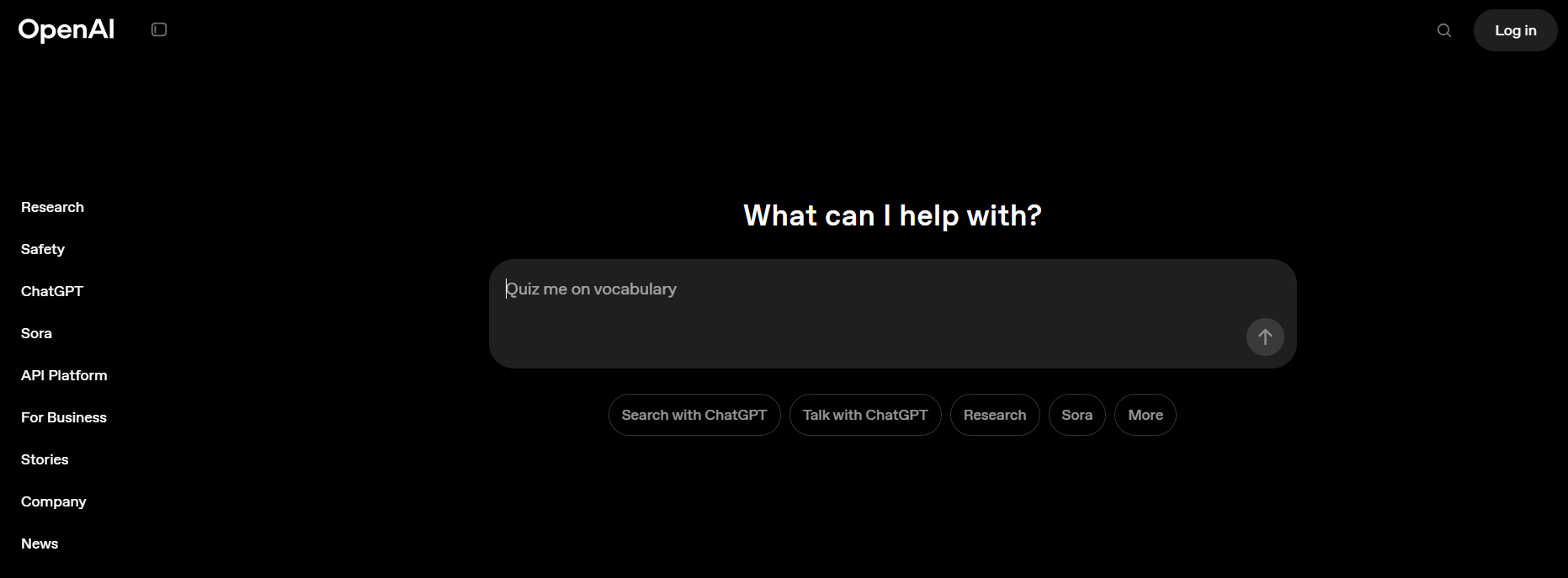5 Best AI Tools for Technical Writing in 2025

Consider you’ve gotten the green light to start a big technical writing project. The only problem? You’re not sure where to start. Well, if you’re struggling with technical writing, you’re not alone. This type of writing requires specialized knowledge and skills to communicate complex information clearly and accurately. Content scaling is often essential in managing such large projects efficiently.
It takes time and effort to produce high-quality technical documents. Fortunately, there’s a solution. In this guide, we’ll introduce you to the best AI for technical writing. These tools will help you produce technical documents faster without sacrificing quality.
One of the best tools on the market is Arvow's AI article writer for SEO. This powerful tool can help you meet your content goals by streamlining the writing process and enhancing your technical writing.
What Is Technical Writing

Technical writing communicates complex or specialized information in a clear, concise, and accessible way, usually to help users understand a product, process, or system. This form of writing isn’t about persuasion or creativity; it’s about clarity, accuracy, and utility. Technical writing must always be accurate, well-structured, consistent, and easy to navigate.
Common types of technical writing include user manuals, product documentation, API documentation, knowledge bases and help centers, standard operating procedures (SOPs), and release notes. Whether you're writing for a non-technical user, a customer support rep, or a software engineer, technical content must always be accurate, well-structured, consistent, and easy to navigate.
Why Technical Writing Matters
Technical writing matters for three key reasons:
It improves the customer experience
Helps teams work more efficientl
Boosts SEO.
For customers, technical writing helps them learn how to use your product, reduces support tickets by making help easy to find, and improves onboarding and satisfaction. For teams, technical writing documents processes and features for cross-functional use, supports training and handovers, and ensures compliance in regulated industries. Finally, from an SEO perspective, well-written technical documentation can rank in Google (e.g., "how to connect [product] to Shopify"). Technical blogs and guides can attract developer or product traffic via long-tail keywords. Bottom line: Great technical writing reduces friction for users and scales knowledge both within and outside your organization.
The Challenges of Traditional Technical Writing
Technical writing has high stakes, but traditional methods are often time-consuming, prone to inconsistency, resource-heavy, and challenging to scale. Writing documentation takes time. Writers need to understand complex systems, conduct interviews with product teams, and manually maintain versioned documents.
Technical content is also often inconsistent. Multiple contributors can cause variations in tone, terminology, and structure. Additionally, technical writing can be resource-heavy. Many teams can’t afford a dedicated technical writer, so they rely on overloaded engineers or marketers to do it. Finally, technical writing is challenging to scale. As products evolve, documentation often lags, resulting in outdated pages, broken links, and suboptimal user experiences.
How AI Helps Solve These Challenges
This is where AI steps in, not to replace technical writers, but to amplify their efficiency and accuracy. Key benefits of AI in technical writing include faster drafting, simplifying complex content, ensuring consistency across documents, facilitating real-time updates, and enhancing SEO integration.
First, AI tools can generate initial drafts for help articles, how-to guides, or feature descriptions based on a brief prompt or uploaded product data. E.g., “Write a setup guide for a new analytics dashboard feature.” Second, AI can automatically rephrase dense, technical text into simpler language for non-expert readers, bridging the gap between engineers and end-users.
Third, advanced AI (like Arvow) utilizes brand training and document templates to ensure that all output adheres to the same voice, tone, and format, even across extensive content libraries. Fourth, when products change frequently, AI can help you rewrite or regenerate affected documentation in minutes, instead of waiting days for manual rewrites. Finally, some AI tools (especially Arvow) integrate SEO into content generation, ensuring that your documentation isn't only functional but also discoverable on Google.
Related Reading
8 Key Features to Look Out For in an AI Tool for Technical Writing

1. Contextual Learning from Your Business or Product
Technical writing must meet specific standards. Generic content doesn't cut it. You need precision and relevance, along with a clear understanding of your business, product, or system. Look for AI tools that can upload and learn from your internal assets, including docs, manuals, and SOPs.
These tools should enter a learning phase, mirroring your terminology and reflecting your specific workflows and product features. For instance, platforms like Arvow allow you to upload your knowledge base or changelogs. The AI then generates user guides or help docs that sound like they came from your team.
2. Structured Output with Formatting Controls
Technical documents must be scannable and formatted adequately with sections, lists, code blocks, tables, and headings. Look for AI that can control the structure of your outputs with header hierarchy support (H1, H2, H3), bullet and numbered lists, code block formatting, and custom templates for docs or guides. While Claude and ChatGPT can structure content well with markdown and custom sectioning, tools like Docsie offer drag-and-drop structure for live documentation.
3. Built-in SEO Optimization (for Public-Facing Docs)
Technical documentation often doubles as organic traffic channels (e.g., “how to connect Shopify to X”). Your AI tool should create search-friendly outputs. Look for keyword-aware generation, SEO metadata suggestions (meta titles, descriptions), internal/external link placement, and schema-aware formatting (FAQs, tutorials, how-tos). Arvow stands out with native SEO optimization, automatically linking related articles, inserting keywords, and formatting for SERP snippets.
4. Source Referencing and Citation Control
In technical writing, credibility and traceability are crucial, particularly in regulated industries or complex systems. Look for AI that cites its sources (e.g., Perplexity AI), footnote or reference generation, and inline documentation support (especially in APIs or legal docs). Perplexity AI and Claude are powerful in providing source-backed summaries. This is critical for compliance and audit-ready documentation.
5. Multi-Channel Publishing & Integrations
Technical content can be found in various locations, including your help center, CMS, blog, internal wiki, PDF guides, and product overlays. Look for AI with direct integrations with CMS platforms (WordPress, Webflow, Shopify), export options (HTML, PDF, Markdown), sync with Notion, Confluence, or GitHub, and one-click publishing or Zapier support. Arvow supports one-click publishing to multiple platforms, so your team doesn’t waste time copying and pasting between systems.
6. Team Collaboration & Review Workflow
Good documentation is rarely a solo effort. You need AI tools that support feedback loops, versioning, and access control. Look for commenting, approval, and editing permissions, version history and rollback, shared team libraries, and style guide enforcement across users. Writer.com excels here with robust collaboration tools and the ability to lock in terminology and enforce grammar/tone rules across teams.
7. Tone, Clarity, and Readability Controls
Technical writing must be easy to understand for its intended audience. Some readers are engineers, others are customers, or beginners. Look for adjustable tone (formal, instructive, neutral, etc.), readability score previews (Flesch-Kincaid, grade level), simplification and rephrasing tools, and passive-to-active voice conversion. Grammarly is best-in-class here, while ChatGPT and Claude allow you to prompt for tone and style adjustments on the fly.
8. Long-Form Memory and Multi-File Context Handling
Technical writing often spans multiple sections, documents, or even entire systems. Your AI should retain context across files or long input sessions. Look for extended memory (100k+ tokens or multi-page inputs), context chaining between related documents, file upload support (PDFs, DOCs, Notion pages), and the ability to generate cohesive manuals or guides. Claude 3 Opus supports up to 200,000 tokens, allowing you to input entire manuals or wikis and generate accurate, structured outputs without losing context.
Stop struggling with content creation, let Arvow transform your blog with feature-rich, factual articles that rank in search engines, all in just 30 seconds. Our AI SEO Writer doesn't just generate content; it automatically publishes, formats with images and videos, and intelligently links to relevant sources while maintaining your brand voice across 150+ languages. Join over 25,260 business owners who have turned their blogs into automated traffic machines. Claim your three free articles today and discover why we're the content solution that's keeping entrepreneurs up at night.
Related Reading
5 Best AI Tools for Technical Writing in 2025
1. Arvow: The Top Choice for Scalable, SEO-Optimized Technical Writing
 Arvow is an AI content generation platform designed specifically for businesses that want SEO-friendly, brand-aligned articles. It’s tailored for blog content, help documents, product tutorials, and FAQs, especially when speed and accuracy are crucial.
Arvow is an AI content generation platform designed specifically for businesses that want SEO-friendly, brand-aligned articles. It’s tailored for blog content, help documents, product tutorials, and FAQs, especially when speed and accuracy are crucial.
Key Features
Upload business assets (website, PDFs, product manuals) → AI learns your tone, terminology, and knowledge base
Generates SEO-optimized blog posts, documentation, and how-to articles
Built-in internal/external link generation, meta tags, and image prompts
One-click publishing to WordPress, Webflow, Ghost, Wix, Shopify
100% plagiarism-free content, ready to go live
Best Use Cases for Technical Writing
Help center articles that need to rank on Google
Feature walkthroughs that match your brand tone
Product onboarding content that pulls from internal knowledge
Creating documentation at scale without hiring a writing team
Strengths
Tailored to your brand and product
Handles both SEO and structure
End-to-end publishing ready
Limitations
Not ideal for code-heavy or developer-first technical writing (e.g., SDK documentation)
Ideal For
SaaS companies, product-led startups, marketing teams, and anyone scaling educational content.
2. Perplexity AI: Your Instant Research Assistant
 Perplexity is a real-time AI research assistant that pulls data from the open web, synthesizes answers, and cites sources. It’s not a writing assistant per se, but a discovery and summarization engine.
Perplexity is a real-time AI research assistant that pulls data from the open web, synthesizes answers, and cites sources. It’s not a writing assistant per se, but a discovery and summarization engine.
Key Features
Answers complex questions with live sources
Links to references for fact-checking
Summarizes long reports, PDFs, or research papers
Chrome extension and API available for integration into workflows
Best Use Cases for Technical Writing
Researching emerging topics or fast-changing industries
Summarizing white papers, changelogs, or product update logs
Finding technical definitions or comparisons with sources
Strengths
Up-to-date, web-connected responses
Transparent citations and links
Fast research tool for writers and editors
Limitations
Not designed to generate structured documentation or long-form content
Limited customization or tone control
Relies on available web data, not your proprietary business content
Ideal For
Writers, editors, analysts, and technical SEOs who need trustworthy, source-backed research.
3. Claude AI (Anthropic): The Best AI for Long, Structured Technical Reasoning

Claude (from Anthropic) is a powerful conversational AI known for its context length, structured thinking, and gentle, instruction-following tone. Claude 3 Opus in particular excels at writing long, coherent technical documents with high factual reliability.
Key Features
Handles very long context inputs (up to 200k+ tokens)
Writes cleanly structured, logically organized responses
Tends to follow nuanced instructions better than GPT in multi-step tasks
Especially strong at summarizing, restructuring, or expanding technical documentation
Best Use Cases for Technical Writing
Long technical manuals or white papers
SOPs or process documentation for enterprise
API overviews, feature deep dives, system architecture descriptions
Strengths
High reliability with logical flow
Excellent at interpreting nuance and edge cases
Safer, less likely to hallucinate or overstate conclusions
Limitations
Slower response time for huge tasks
Less native integration with publishing platforms or SEO tools
No built-in formatting/publishing engine (you'll need to copy/paste outputs)
Ideal For
Enterprises, educators, and senior technical teams write long, structured, or policy-level documentation.
4. Grammarly: The Go-To for Polishing Technical Writing
 Grammarly is a long-established AI writing assistant focused on grammar correction, tone adjustment, clarity, and conciseness. While not a content generator, it ensures that everything you write reads well.
Grammarly is a long-established AI writing assistant focused on grammar correction, tone adjustment, clarity, and conciseness. While not a content generator, it ensures that everything you write reads well.
Key Features
Real-time spelling, grammar, and clarity suggestions
“Tone Detector” to align voice with purpose (e.g., confident, professional, neutral)
Style guide enforcement for teams (Grammarly Business)
AI rewriter to simplify or expand sentences
Available as a Chrome extension, desktop app, or browser plugin
Best Use Cases for Technical Writing
Reviewing technical documentation for grammar and clarity
Ensuring tone consistency across a product manual
Polishing client-facing product descriptions and walkthroughs
Improving non-native English writing
Strengths
Best-in-class grammar and sentence flow optimization
Enterprise features for teams (shared style guides, rules)
Smooth integration into MS Word, Google Docs, Notion, and email
Limitations
Cannot generate content from scratch
Limited control over document structure, SEO, or code syntax
Ideal For
Writers, editors, and QA teams refine technical and professional writing for clarity and tone.
5. ChatGPT: The Best AI for General Technical Content Creation
 ChatGPT (especially GPT-4 or GPT-4o) is a conversational AI tool that balances general knowledge, long-form writing, and customization via prompting. It’s widely used for writing technical blogs, summarizing concepts, drafting emails, and ideating content outlines.
ChatGPT (especially GPT-4 or GPT-4o) is a conversational AI tool that balances general knowledge, long-form writing, and customization via prompting. It’s widely used for writing technical blogs, summarizing concepts, drafting emails, and ideating content outlines.
Key Features
Generate outlines, explanations, and full-length articles
Explain technical topics in plain English
Switch between expert tone and casual voice
Custom GPTs allow niche tuning for industries or use cases
Best Use Cases for Technical Writing
Explaining technical issues to non-technical audiences
Writing explainer articles or beginner-friendly tutorials
Rephrasing engineering notes into documentation
Brainstorming naming conventions, steps, or product labels
Strengths
Versatile and prompt-responsive
Supports Markdown, code snippets, tables, and bullet formatting
Great for prototyping drafts or simplifying engineering notes
Limitations
Can hallucinate technical details if not cross-verified
Lacks publishing, SEO, or brand memory unless used with plugins or GPT customization
Doesn’t natively remember business context unless fine-tuned or repeatedly prompted
Ideal For
Solo founders, generalists, or writers needing flexible, conversational support for multiple technical content formats.
Get 3 Free Articles when you Sign Up Today!
Arvow is a content scaling solution that uses artificial intelligence to help you generate blog posts quickly. The software can create fully developed, SEO-friendly articles in just 30 seconds. After generating a piece of content, Arvow will automatically publish it to your blog, format it with images and videos, and create internal links to relevant articles, all while maintaining your unique brand voice. With Arvow, you can transform your blog into an automated traffic machine.
What Makes Arvow Unique?
Arvow stands out from other AI content generators because it doesn’t just create content. It helps you scale your blog. With Arvow, you can produce hundreds of articles that will get your site more organic traffic and improve your overall SEO. The software’s features allow you to automate many of the tedious tasks associated with content creation and publishing.
Related Reading
Surfer SEO vs Ahrefs

Generate, publish, syndicate and update articles automatically
The AI SEO Writer that Auto-Publishes to your Blog
-
No card required
-
Articles in 30 secs
-
Plagiarism Free
